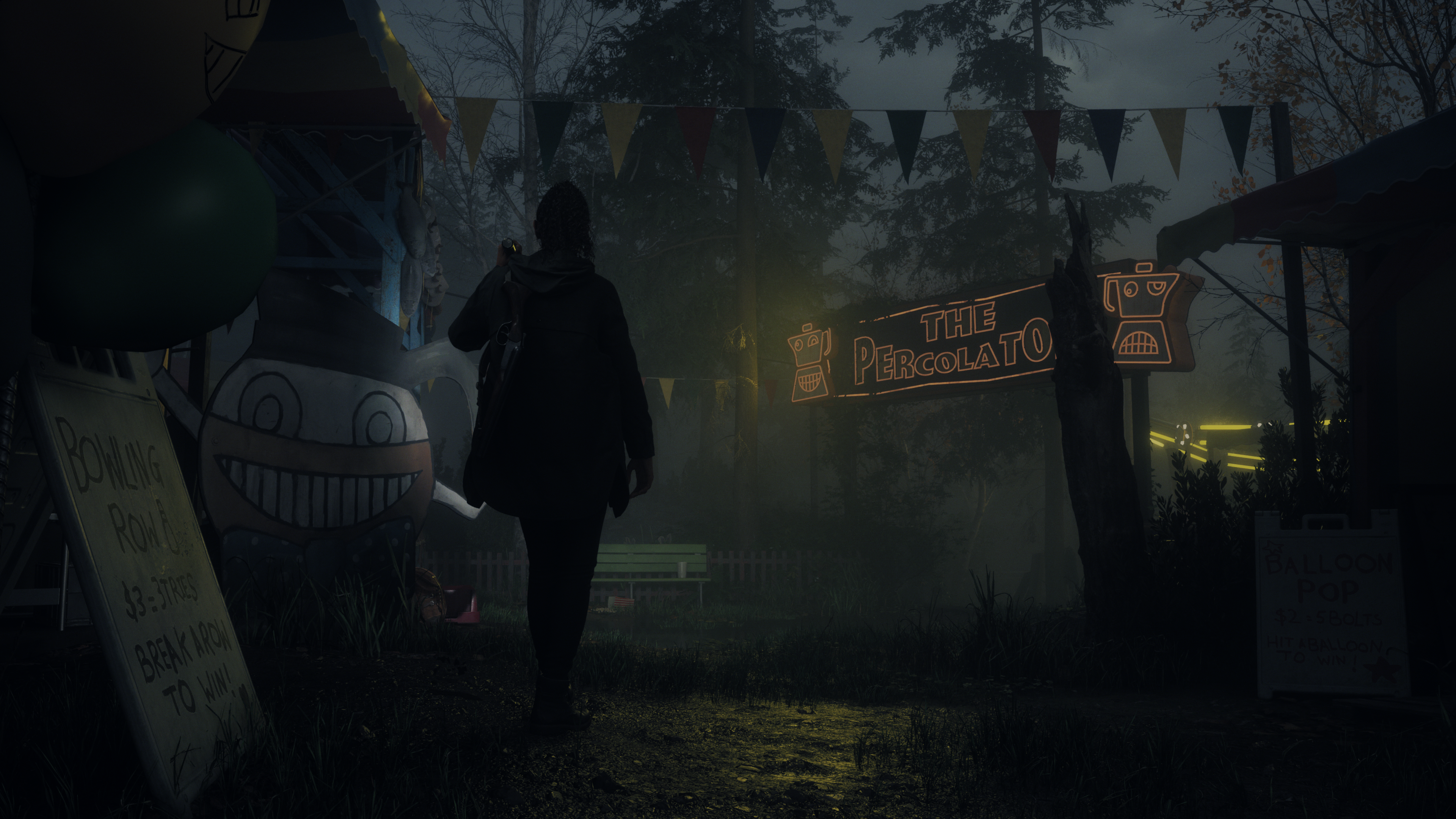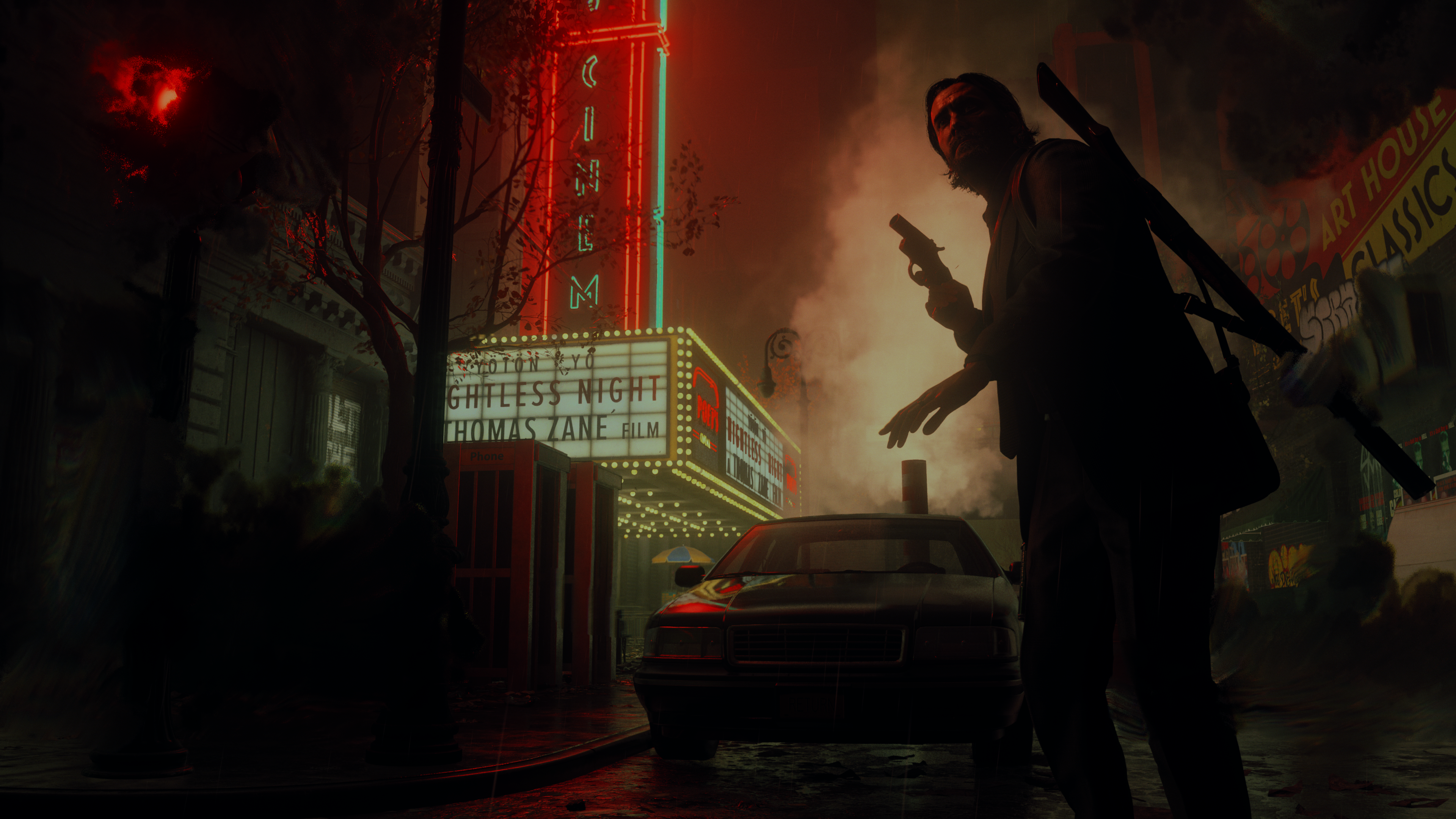Trending
Opinion: How will Project 2025 impact game developers?
The Heritage Foundation's manifesto for the possible next administration could do great harm to many, including large portions of the game development community.

Seeing Remedy Entertainment's cult favorite horror game Alan Wake make a comeback is a strange feeling. Arriving 13 years after the original, Alan Wake 2 sees the return of the titular protagonist who can rewrite reality, all while evading the creeping dark forces that's always one step behind him.
But with the sequel, Alan's story is only one part of Remedy Entertainment's shift to a more character-driven and sprawling take on survival horror—making this follow up an unexpectedly radical departure from the original.
At a recent hands-on showcase, I spoke with game director Kyle Rowley and principal narrative designer Molly Maloney about making the long-awaited return, building a “Remedy Connected Universe” with clear connections to 2019's Control, and how the extended wait resulted in a more introspective sequel about a grand return.
After 13 years in the metaphysical Dark Place, writer Alan Wake returns to the real world a changed man. He's still haunted by Mr. Scratch and the malevolent forces that kept him captive. Joining him is new protagonist Saga Anderson, who slowly gets sucked into the weird and all-too-real narrative of Alan's fight against the darkness. While Alan faces his demons, she'll face her own in the Cult of the Tree, whilst crossing paths with members of Control’s Federal Bureau of Control.
The original Alan Wake and its side-game spinoff Alan Wake: American Nightmare played with that familiar Remedy-style self-awareness for its plot, which made for an intriguing and unique take on a horror game. Alan Wake 2 continues with that by leaning into the fact that Alan has been gone for over a decade. The gap in time gives the sequel an eerie-but-familiar atmosphere that channels the same vibe as David Lynch's third season of Twin Peaks.
Choosing a tone like that poses an interesting challenge for Remedy, when ensuring the game is approachable to newcomers. It may give new players the impression that they’re in a state of confusion, feeling as if they’ve stepped into a long-brewing and bizarre story that's at its mid-point.
Both perspectives are intentional, and something that the developers at Remedy Entertainment pinned as guiding principles for the dual protagonists. According to principal narrative designer Molly Maloney, Alan Wake 2's dual protagonists anchor one of the game's core themes. New protagonist Saga Anderson is not only a character for newcomers but offers a unique perspective on the larger mystery of the game.
"One of the core themes of Alan Wake 2 is duality: two worlds, two protagonists, light versus darkness. So it made a lot of sense from the early days to bring Saga in as a protagonist along with Alan," said Maloney on expanding the scope of the story. "Yet, I think that Saga is so much more than that. We talked about her a lot from an intro point-of-view, and I think that is critical given that it's been 13 years."
"But again she's so much more than that, she provides a really important perspective," she continued. "With Alan being so immersed in this world of darkness for 13 years, he comes from a very particular point of view. Saga provides the foil to that point of view, she also provides these wonderful opportunities to explore the Pacific Northwest, these places that I know players are going to be excited to see again."
Alan Wake 2 continues the series' take on surrealist horror with an expanded scope. While the original game was action-horror, Alan Wake 2 focuses more on traditional survival horror, taking direct cues from Capcom's Resident Evil 2 remake. To give it that Remedy influence, the developers have a more character-specific take on the genre, with both protagonists' scenarios focusing on different types of horror storytelling that fit their plots and personalities.
Saga Anderson’s story begins in a chapter called "Local Girl," which brings her to the small Pacific Northwest town of Watery to investigate the Cult of the Tree (a dangerous organization worshiping a supernatural entity known as the Darkness). Saga's chapters in the game focus on the eeriness of what should be an ordinary criminal investigation. The Twin Peaks influence is still evident, but the developers also took inspiration from HBO's True Detective, a gritty and moody detective story that slowly shifts into occult horror.

Dropping Saga into a Pacific Northwest setting—the same region the first game took place in—feels like an upgraded take on the original game's tone and pace, which is a clever idea for a character focused on guiding new and returning players into the weirder world of Alan Wake 2. Saga's section felt nostalgic for the original but equally unnerving with what's new.
While exploring the town of Watery and its bizarre Coffee World amusement park, Saga finds new clues to her investigation and fights members of the Cult possessed by the Darkness. Like the original, the combat loop centers on weakening enemies with your flashlight to pierce their dark protection, then finishing them with careful shots from your firearms. These encounters feel more heightened within the survival horror framework, as ammo is scarce and batteries are hard to come by.
As Saga gains more clues and insight, she can enter her "Mind Palace"—one of Remedy's significant innovations for the sequel. It’s an explorable “mental” office where she can examine clues, look over maps, and piece together connections to move her investigation forward. This space offers a brief respite, allowing players to find a sense of direction in the story. It's a clever take on the traditional menu system. Still, it's also a character statement as Saga's insight and intelligence allow her to see the bigger picture—and how she fits into the evolving 'story' of Alan Wake 2.
Speaking with game director Kyle Rowley, the element of mystery is core to all of Remedy's games, including—and especially—Alan Wake 2.
"There are people out there who start piecing together details and make theories about things in our games, and, you know, I think mysteries are a big part of Remedy's DNA," said Rowley. "We don't necessarily always answer all the questions to those mysteries, but we like people to speculate on them. And, like, having those connections between characters and different games and stuff like that kind of allows us to lean into that quite a lot."

These mysteries become more entangled when players switch to playing as Alan. A chapter called “Room 665” which takes the haunted writer to a nightmare version of New York City conjured up by Alan’s subconscious and the Darkness. Alan's “New York City” is of his own making, taking the hard-boiled urban hellhole of the fictional Alex Casey novels and filling it with spectral entities who whisper his name from the shadows before leaping towards him. Alan's story is a stark departure from Saga's more slow-burn detective story, fully embracing a more horrifying setting that is truly out to get you.
Alan's campaign leans into the fact that he is a writer, and his creations have been twisted to target him. Alan meets a conjured-up version of fictional detective Alex Casey, who’s played by both Remedy creative director Sam Lake and actor James McCaffrey. (McCaffrey once voiced Remedy hero Max Payne, and he’s channeling that character’s gruff nature here.) One edge that Alan has against the Darkness is his ability to control the light with a new gadget known as the Angel Lamp, which allows him to reposition light sources to illuminate areas and even open up new paths to hidden areas.
However, his most powerful ability is to "rewrite" the reality conjured up by the Darkness. Like Saga's mind palace, Alan has his writer's room, which lets him observe clues that can become sources of inspiration to reshape the environment through his prose—literally using the creative process to write his way out of danger. Inside one area called the Oceanview Hotel, Alan finds information about a dark ritual performed by The Cult of the Tree’s dark ritual that went terribly wrong. Alan's abilities let him recreate the events in question to uncover how things played out. In doing so, the reality of the Oceanview Hotel becomes more unstable, resulting in more chaos and hostility from the Darkness—as if the haunted house is actively trying to force him out.
Alan's scenario shifts deep into supernatural and psychological horror, showcasing many of Remedy's more elaborate tricks of world design and storytelling that were seen in their previous game Control —which includes live-action storytelling to contrast with the game's visuals. It's a tremendously bold take on survival horror that really impressed me, and it was an approach that Remedy felt was right for its sequel.
"Horror games are having a renaissance right now, and I think it's a very exciting time to be a horror game fan," said Maloney. "One of the things that makes this game unique is that the environments are particular to each character and their stories. Alan is trapped in his own world that's a nightmarish take on New York City, and he is trying to write his way out, and the player is invited to be a part of that. I think that's unique for horror games and Remedy, and I think that's very exciting."
Alan Wake 2 seems to be making the most of reviving a series and its protagonist from a long rest. It embraces the fact that this sequel took a long time to come to fruition, which the devs described as a "meta" approach to making the sequel, with fans waiting for Alan to return as long as he was trapped in the Dark Place.
While Alan Wake 2 is Remedy's big effort to revive the series, it's also connected to the planned Remedy Connected Universe with Control and its upcoming sequel. However, they're focused on ensuring that Alan Wake's big return is good enough on its own.
"We're always interested in exploring ways to connect our games, but for now, we're trying to make sure that can stand on its own," said Rowley. “When we start games, it's not our founding idea; we start with what's important for the game itself, and then try to figure out ways to connect to our previous—which we have done before in different ways. For us, this concept we have for Alan Wake 2 is the best one we've made, and I think everything's come together at the right time. Horror games are back now, and we learned a lot from work on Control and its success. So yeah, it's really the right time for Alan Wake to return."
Alan Wake 2 and its more purposeful, story-driven take on horror feels like Remedy Entertainment at its most refined and experimental after its success on Control. That approach could be just what the long-dormant series needs to make its comeback.
You May Also Like